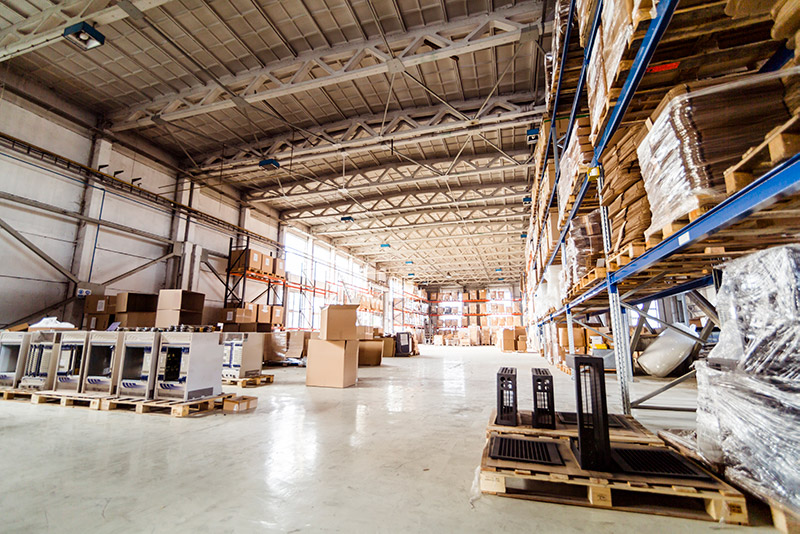How To Safely Work With Pallets

Pallets are used worldwide and are one of the most important tools. However, they can be dangerous if you do not handle them safely. Pallets that are used in supply chain operations can lead to punctured wounds, sprained ankles, broken toes, or more severe life-threatening injuries. If pallets are used for purposes such as a man lift, the results could be tragic. With over billions of pallets circulating in the United States, warehouse employees should take precautionary steps to avoid injury.
Never Man Lift Pallets
Pallets should never be handled by a man lift. Only use approved engineering platforms like a forklift after having enough training and receiving a certificate. Pallets may be designed to hold 2,800 pounds or more so these heavy loads should be used by a machine not by a man lift.
Make Sure Employees Are Properly Trained
Monitor the worker’s performance to ensure that workers are using safety guidelines and not taking shortcuts.
Furthermore, proper training for handling powerful tools should be implemented to prevent untrained employees from injuring themselves or others and possibly damaging the mechanical equipment.
Never Leave Pallets Standing
Empty pallets standing on end are unstable and cause injury to your foot or leg if they tip over.
Wear Protective Clothing
Always wear gloves when handling pallets and protective shoes so that a pallet does not fall and injure your foot or get splinters from not wearing gloves. Be sure to always wear personal protective equipment to prevent common injuries such as hand, foot, and back injuries.
Some facilities authorize a soft landing for pallets that are placed on the floor to avoid the noise from damaging the employee’s ears. DO NOT drop or bang pallets.
Do Not Use Damaged Pallets
If pallets are damaged or not appropriate for the job, they should be immediately removed from the workplace. Set aside damaged or substandard pallets for use in repair or recycling. If damaged or substandard pallets end up being used, they could cause serious injuries especially when placed on a high shelf with a heavy load.
Furthermore, inspect the pallets for any defects such as loose nails, splinters, or cracks. Discard or put damaged pallets aside for recycling or repair.
Always Clean Up Debris From Pallets
Broken or damaged pallets can cause slip and fall hazards and instability for handling material equipment. Debris in pallets can cause damage to the wheels of equipment. Always keep the warehouse clean to prevent dangerous accidents from happening.
Be Extremely Cautious When Standing On Pallets
Warehouse workers standing on a pallet could be injured if the deck board breaks or if the worker’s foot gets caught between the deck boards. Depending on the design of the pallets, some nine leg design pallets may be prone to tipping over when empty.
Use a Pick Hook
To avoid getting injured while stepping on a pallet, use a pick hook to reach the back of a pallet. This tool prevents a pallet from tipping over from a weight imbalance.
Be Careful When Stepping in Between Pallets
Some warehouses store their pallets side by side in storage racks so workers may step between or on pallets when accessing pallets. If the workers are not careful they can potentially get injured on the knees or ankles if they lose balance while stepping between pallets.
Manage The Risk When Manually Lifting Pallets
Pallets vary greatly in weight and size. Lightweight pallets can be lifted by one employee but heavier pallets are more common in the workplace and can be a hazard if they are not lifted safely.
If the warehouse does not have a forklift employees should be encouraged to work together and lift the pallet to prevent an injury from occurring.
Also, make sure that pallets are loaded with even weight distribution and do not exceed the maximum weight capacity when loading or stacking manually.
Don’t Stack Pallets Too High
The workers should not stack the pallets too high if they are stacking or unstacking pallets manually. Pallets should be stacked by a maximum of 4 feet to make handling a pallet easier and avoid potential injuries.
Also, have a forklift separate full stacks of pallets in half. Moreover, ensure the pallets are stacked flat and in stable piles when not in use.
Make Sure That Pallets Slide Freely
Ensure that pallets slide freely when tipping the pallet slightly to make sure that the pallet does not get snagged on a protruding nail.
It is better to have a co-worker assist you when manually moving a wood pallet off a stack.
Use Mechanized Equipment When Available
Forklifts and automated pallet dispensers are powerful tools of equipment designed to handle the weight of pallets with ease. It is better to use these powerful tools of equipment to avoid the risk of injury.
Be Cautious When Lifting a Pallet
When you lift a pallet, keep it vertical and close to your torso to maintain a close center of balance. DO NOT hold a pallet out from your body, you could end up getting injured.
Handle With Care When Entering The Facility With Pallets
When using a power jack to enter with pallets, make sure the stability of a load of merchandise by entering squarely. Be aware that when entering you may be pushing the pallet forward and potentially into another worker. Some facilities, however, implement a warning honk to alert other workers before entering with a new load of pallets.
Do not leave pallets on areas that need to be accessed, such as doorways, emergency exits, fire extinguishers, switch boxes, and emergency equipment.
Conclusion
Handling pallets is a daily task in many warehouses. Additionally, working with pallets can present hazards to workers and people that handle pallets daily. Workers can potentially suffer from cuts, abrasions, and other injuries from damaged pallets. Moreover, workers can also suffer injuries from broken pallets, and dropping pallets can cause potential damage to the equipment and workers.
Safely handling pallets in workplaces ensure a safe environment. Whether you’re the owner of the workplace, an employee, or someone that uses pallets regularly, you should ensure safety procedures are implemented and taught.










Leave a Reply